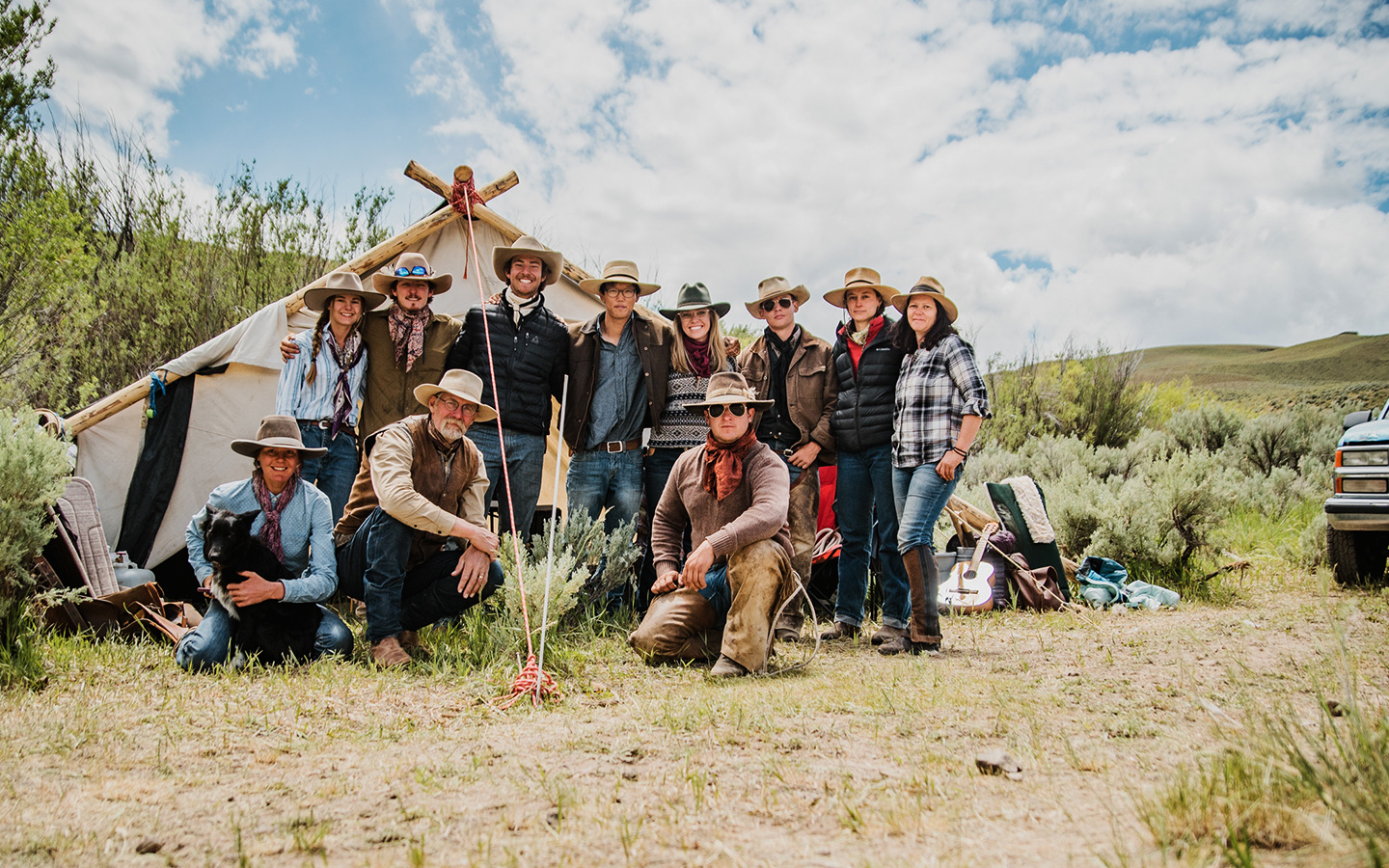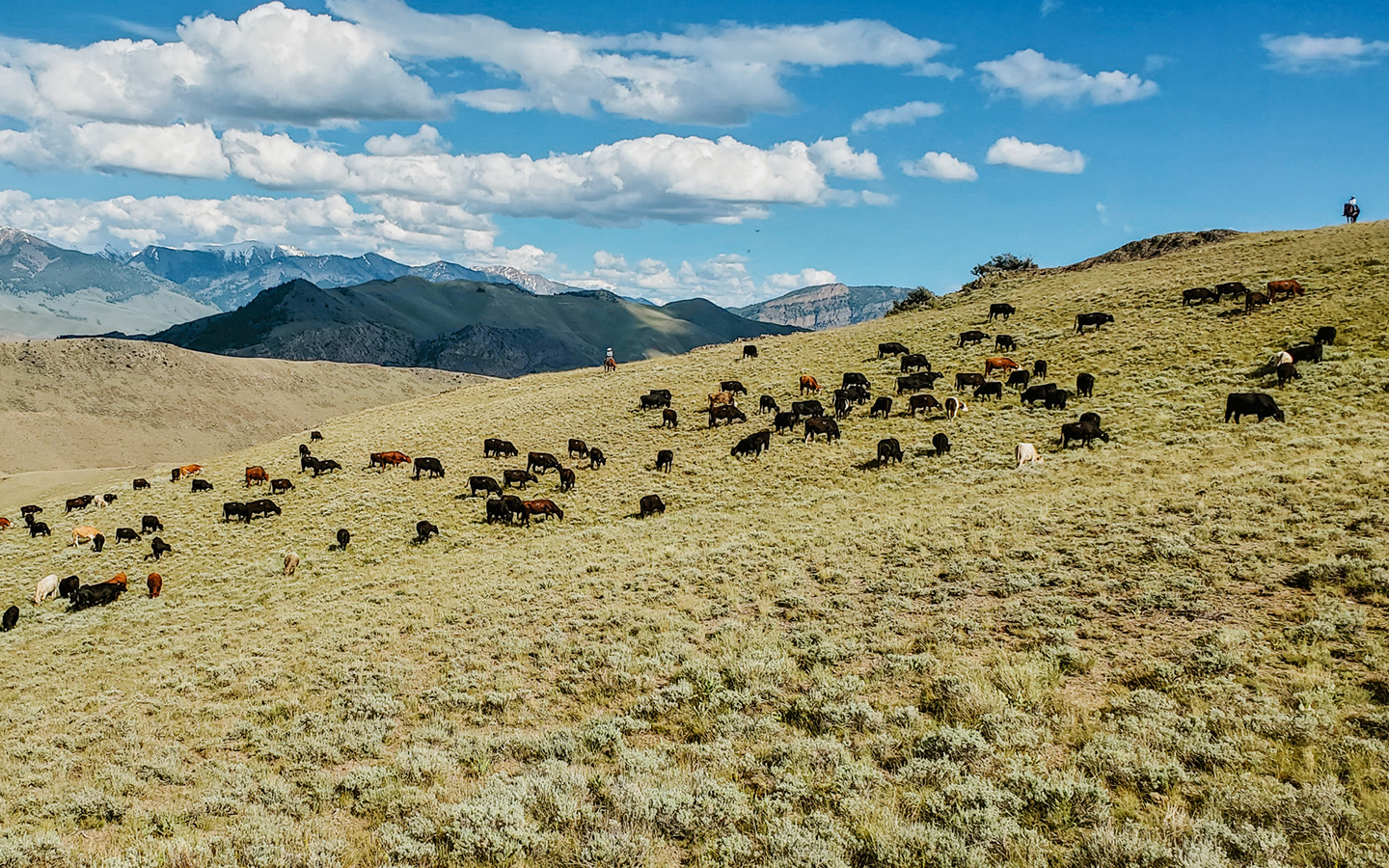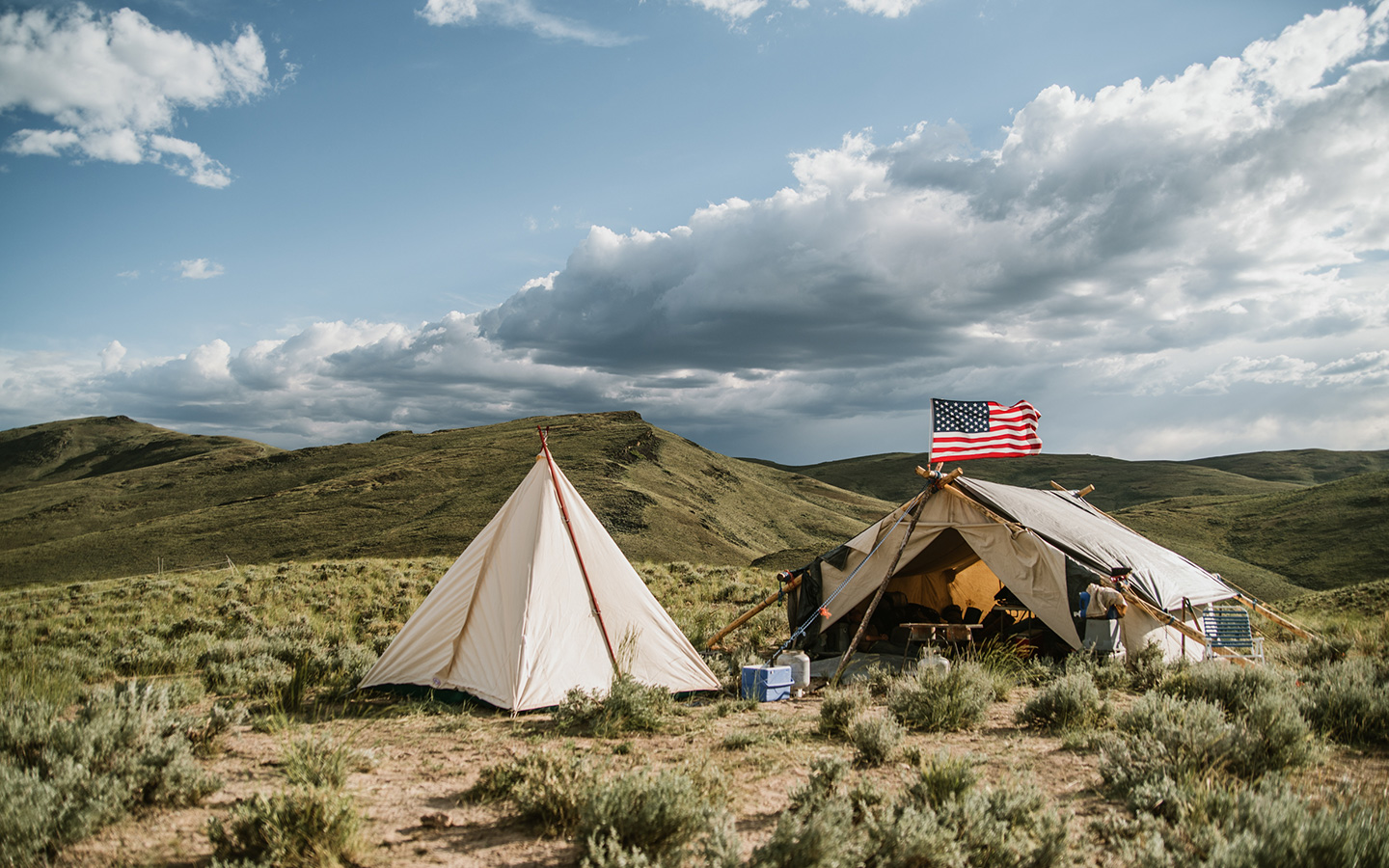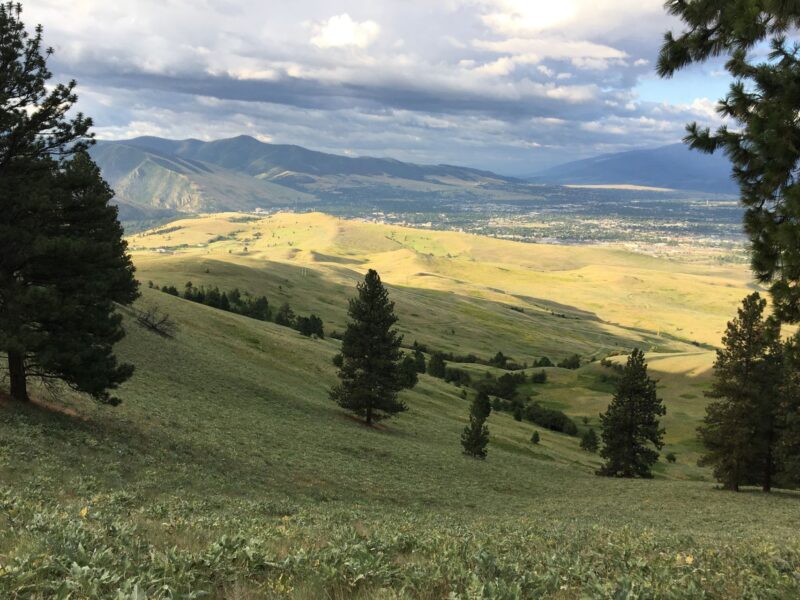It was late September 2014. We had just brought our cattle home from our public lands grazing allotment, which encompasses seventy square miles of steep canyons and windblown ridges above the Salmon River corridor. Like every other fall after gathering the herd from the mountains, we counted them all as they filed through the gate. And then a second time, because our count came up fourteen head short. After a few more counts just to make sure, we knew we had a problem. Yes, most of our cattle were home on the ranch for the winter, but some would never return from the high country.
As with many area ranchers, we were feeling the pressure of wolf predation. Despite our best efforts of riding five days a week, covering thirty-mile circles just to get a handle on where our cattle were, fourteen had succumbed to inhabitants of that wild landscape. There was no blame for the wolves; after all, they had a right to consume what they needed to survive. We were in their territory and we knew it.
What needed to change is how we coexisted with our canid neighbors.
Months later, we visited some friends a few days before Christmas. We caroled for them and they made sure that we had a few tins of homemade caramels before we left their warm kitchen. These folks had been in the valley for their entire lives, ranching and carving out a living any other way they could. A hard life in the high desert has not made them bitter; they are some of the most generous and wise people I know. My dad looked over his shoulder into their cozy living room, lit by an evergreen festooned with colorful lights sparkling from amidst dark green branches. Something else caught his eye, though, and he stepped quietly away from the joyful chorus in the kitchen to get a closer look.
It was a Charlie Russell painting, framed with reclaimed barnwood. As with many of Russell’s works, the piece featured a group of cowboys out on the wagon, preparing for a day of herding cattle around a crackling fire tended by the camp cookie. Dad smiled; he had always had an appreciation for Russell’s authentic depictions of western life. There was a sort of ironic beauty in the hard life those cowhands lived while riding hundreds of miles on rank Thoroughbred type horses, herding gaunt cattle across the austere landscape. And then an unexpected thought crossed his mind as he more closely examined the scene: could this painting hold the solution to our problems on the range?

I say problems because we were dealing with more than wolf predation on our allotment. Although our rangeland had recovered some with our almost continual day riding and relatively intensive management, the health of the land and the soil was still being impacted by grazing pressures. After all, it is an almost impossible thing to convince a wily range cow to leave the green grass along a creek bottom for any length of time. We felt like we were failing the land, even with the reparations we had made since purchasing the allotment several years prior. We wanted to achieve more than just conservation of the landscape; we wanted it to heal.
My dad left our friends’ house with his mind spinning. What if we lived out in the high country with our cattle all summer, akin to the Russell cowboys of old? We could herd the animals to predetermined areas where the forage was most nutrient dense, avoiding the locations more prone to degradation. With highly controlled management of the herd and some time, my dad believed we would realize our goals for rangeland regeneration. Furthermore, our continual human presence could address the current livestock predator conflict in a non-lethal manner.
My dad, Glenn Elzinga, is a Forester by trade and has been ranching for almost thirty years, while my mom, Caryl Elzinga, is a PhD plant ecologist with extensive experience monitoring western plant populations. They began raising and direct marketing grass fed beef about twenty-five years ago, later certifying our land (including our grazing allotment) and livestock as organic. My parents both contributed their experience, education, and practical knowledge while they spent hours planning and strategizing considerable changes to our grazing management methodology on the Hat Creek allotment.
What resulted is a paradigm we now refer to as “inherding,” short for “intensive herding.” Crews of 2-5 range riders would rotate in and out of temporary cow camps, spending up to a week in the backcountry. Riders would herd the cattle to specific grazing locations, changing their route and destination each day to prevent overutilization of forages. Aside from a few designated locations where animals could cross or drink from a creek, the remaining 55 miles of riparian area on our allotment would be left untouched. At night, the cattle would be settled in a small area surrounded by electric fence. Their night pen would be situated within a few hundred yards of our own camp, our presence deterring any large predators from approaching the herd while they were bedded down.

We first implemented inherding the summer of 2015 with yearling and two-year-old cattle that would finish on grass and ultimately be direct marketed to our customers across the nation. That pilot year was the hardest. We had a lot to learn about stockmanship and herding; turns out directing unified movement of several hundred animals across mountainous landform is not without significant challenges. It was difficult to keep the horses free of injury and in good condition, given the rigor of the miles we rode. Camp infrastructure left a lot to be desired, with tents blowing down in the middle of a night storm on more than one occasion, soaking the sleepless inhabitants. And we were short-handed with a crew comprised of my sisters and I, our ranch hands, and my dad.
We ended that first summer bone tired and with a serious reality check, but somehow still optimistic about the possibilities of the inherding paradigm. There was much to be improved upon, but we had not lost a single animal and our cattle came back in excellent health from the diversity of forage they consumed. Furthermore, we had already witnessed positive changes to the rangeland itself. Vegetation in our riparian areas was green and verdant, stubble standards easily met that year. Maybe Russell was on to something.
That next summer, we offered our first openings for conservation range rider interns. We recognized the potential benefits of inherding not only for our land and our animals, but also as an influential educational opportunity for those who wanted to gain hands-on experience in stockmanship, horsemanship, backcountry living, and rangeland conservation and regeneration.
We expected to receive only a little interest the first go-round, but the response was unexpectedly positive. Of course, a major draw for applicants, many of whom do not come from a background of ranching or agriculture, was the cowboy lifestyle. There is an undeniable romanticism associated with waking up at daybreak to a mug of steaming hot coffee, saddling your horse for the day as the sun turns surrounding slopes to gold, riding across a sagebrush ocean with a herd of black cattle before you, and then sleeping under a night sky resplendent with millions of stars.
I am not here to say those vignettes are not a very tangible part of the work; they are. Having been brought to tears more than once after cresting a high ridge and seeing the astounding beauty of endless country before me, I understand the attraction to the high country and the life of a range rider. But riders have also discovered there was much more to the summer than simply living the seemingly poetic life of a Charlie Russell cowboy. There are days that last long after the sun goes down, frustrations when plans change and miscommunications abound, indeterminate hours in the saddle herding through spring rain and snow, limited sleep, every inch of your body covered in trail dust, sore muscles, and broken-down pickups. There are the hard parts that we always forget until we are living them once again the following year.

Challenges aside, there is also the understanding that develops in those who come to ride for the brand. Range riders begin to see the whole picture as the summer progresses. They learn first-hand that we practice low stress stockmanship not simply because it gets the herd from point A to point B, but because it protects the health and condition of our animals. They grasp that we try to make the right thing easy and the wrong thing difficult with our horses not solely because we need them to willingly do the work of herding, but so we can develop their responsiveness and trust in their riders. They realize that we graze the cattle in locations with exceptional forage diversity not only to benefit the landscape and the soil through targeted grazing, but also to grow nutrient dense and delicious beef for customers. They appreciate that we limit grazing in riparian areas not just to prevent further degradation, but also to promote the regeneration of native plant and animal populations and the potential for carbon sequestration.
We are not offering the conservation range rider internship so that we have inexpensive labor. We dedicate significant time each spring to train the crew in the skills they will need to be successful in the high country, where their education continues as they continue to learn through practical application. Enabling others to experience the many revelations and lessons that come while riding the range has become part of our mission, because we know first-hand the growth and empowerment that can result. While facilitating symbiosis between rangeland and grazing animals is at the core of inherding practice, providing an opportunity for the next generation of land and livestock stewards to learn alongside us has become integral to the work we do.

Every summer since 2014, we have made the trek with our cattle from the Salmon River all the way up to almost 7000’ below Taylor Peak, covering hundreds of miles as we traverse back and forth across the landscape. Each grazing season brings different challenges, and we must adjust to variations in weather and forage and water availability. Our methods have evolved, and infrastructure has improved as we discover what works and what does not. Some mistakes have been costly and heartbreaking, but the results speak for themselves. Our animals return from the range safe from predators and in excellent condition, having developed health and depth of flavor that in turn promotes the wellness of our customers. Riparian areas flourish with an abundance of native plant and animal life, including the beavers that once again build their dams in stream channels. Soils have regenerated to unprecedented levels and upland grasses grow tall and dense. Through the implementation of inherding, the range has slowly healed from decades of overgrazing and so too has our relationship with the wild animals who make their home on it.
We are returning to the range this summer for our seventh season of inherding and we are accepting applications for conservation range rider interns once again. If you are a gritty, humble, and personable individual with a penchant for asking questions, a love for animals and the outdoors, and a desire to learn the practice of regenerative ranching in large scale landscapes, this may be the position for you. The application deadline for 2021 internships is February 10th and more information about the position can be found here: https://www.alderspring.com/about/employment-internships/. For many photos, videos, and stories from past summers on the range, visit our Instagram @alderspring_ranch or our blog, Organic Beef Matters (https://www.alderspring.com/organic-beef-matters/).





